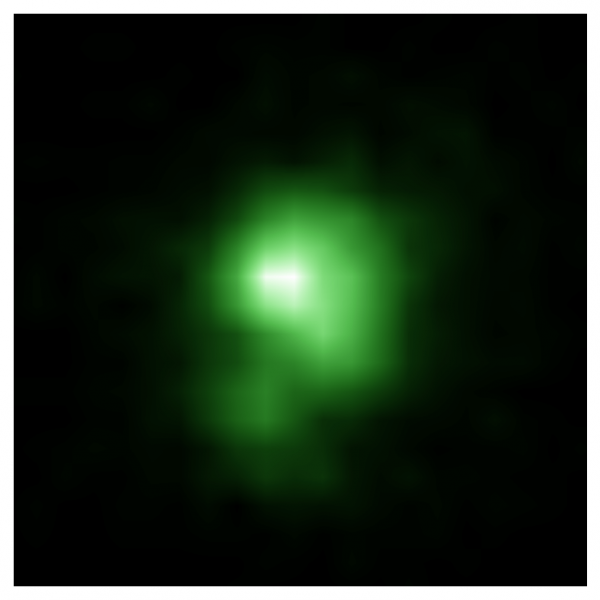After the Big Bang
Following the Big Bang, the Universe expands and matter, as it cools, gradually structures. The first stars and galaxies form a few hundred thousand years after. About one billion years later, the universe has warmed and the most abundant element, hydrogen, is ionized again, like just after the Big Bang. How was this important transformation, cosmic reionization, possible? Astronomers suspect that the galaxies were the main driver of this phenomenon. An international team of researchers including researchers of the University of Geneva (UNIGE) today extensively validated this hypothesis. Indeed, they have discovered a compact galaxy expelling ionizing photons, responsible for the transformation of the Universe. Their article, published in Nature, opens a capital research area in the understanding of the early Universe.

The “normal” matter of the primordial Universe, i.e. 14 billion years old, is mostly in the form of gas. Stars are born from the concentration of this gas and aggregate to form the first galaxies. The UV radiation emitted by stars contains many ionizing photons. This is why scientists suspected that galaxies were responsible for the reionization of the Universe. However, in order to have an impact on cosmic reionization, they had to “expel” these photons, which are easily absorbed. But in twenty years of research, researchers had still not found a galaxy capable of doing this.
Professor Daniel Schaerer and an international team of scientists from the Department of Astronomy of the Faculty of Science, therefore put forward the hypothesis that it was necessary to observe “pea” galaxies. Discovered in 2007, they constitute a special and rare class in the near Universe. Very compact, they would produce explosions or winds powerful enough to “expel” ionizing photons. Yuri Izotov, of the National Academy of Sciences of Ukraine and first author of the study, consulted the Sloan Survey – a catalogue of more than a million galaxies. From this million, the researchers managed to identify five thousand galaxies that meet the theorized criteria of being sufficiently concentrated and emitting very powerful streams of UV radiation. Five of them were chosen for the experiment.
Using the Hubble Space Telescope, which detects UV radiation, UNIGE researchers were able to observe that the pea galaxy J0925, located three billion light years away, does indeed expel ionizing photons with unprecedented force. This momentous discovery would therefore explain the reionization of the Universe and confirm the hypothesis of contemporary astronomers. It will be further developed by further observations with Hubble, in order to better understand the mechanism of photon “expulsion” and to categorize which specific type of galaxies allows this reionization.
Anne Verhamme, a researcher at UNIGE, has also noted that this pea galaxy reveals a very particular spectral signature. Its Lyman-alpha spectrum, i.e. one of the hydrogen lines it produces, is much narrower and more powerful than in other galaxies, confirming her theoretical predictions. This observation therefore makes it possible to set up a more efficient method in the search for galaxies responsible for the cosmic reionization 13 to 14 billion years ago.
These discoveries constitute a considerable advance in the study of the primordial Universe. However, current technology currently provides only a first glimpse of galaxies in the first billion years of the Universe. The new James Webb Space Telescope, scheduled for launch in 2018, is expected to revolutionize the field. It will allow the discovery and detailed characterization of the first galaxies and the sources of reionization. Unknown until then, the early universe is gradually being unveiled.
Further Resource
- Press Release of the Université de Genève : CdP_Schaerer_reionisation_FR.pdf 97.68 kB
Contact IRAP
- Daniel Schaerer : daniel.schaerer@unige.ch






